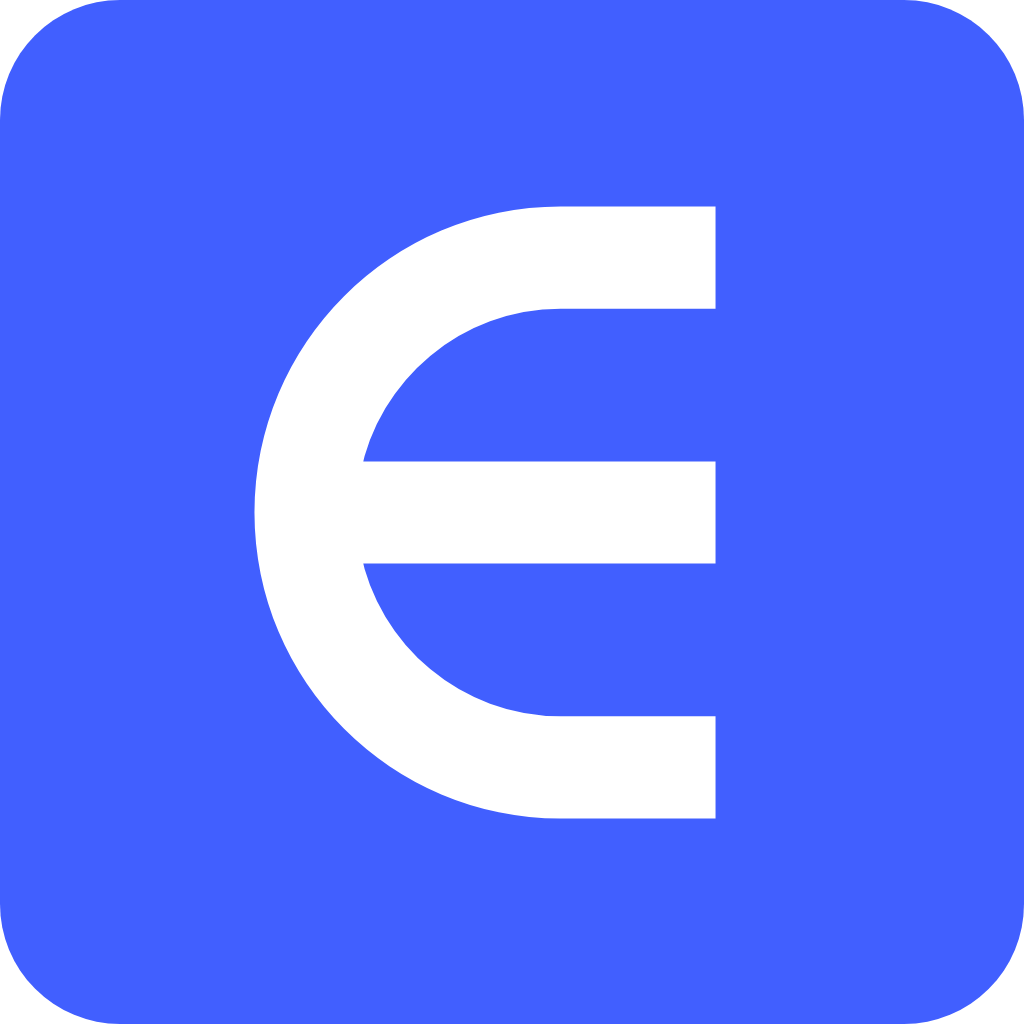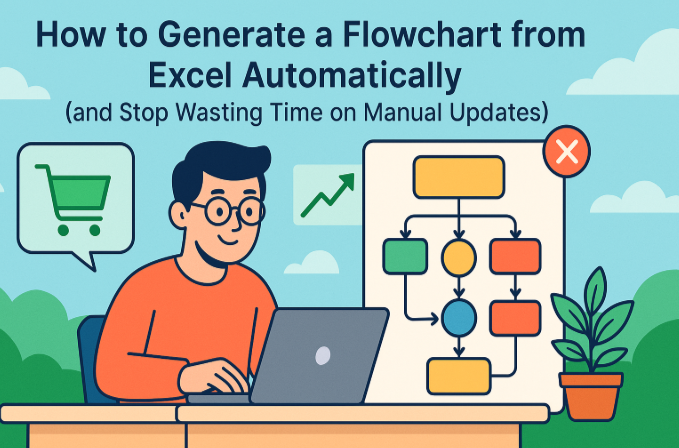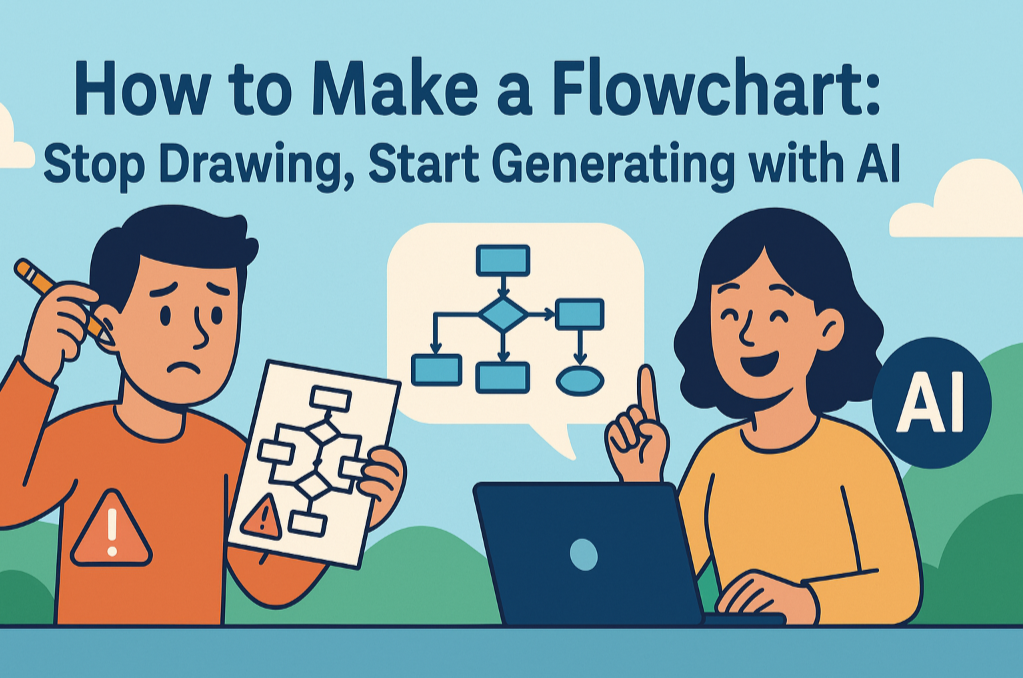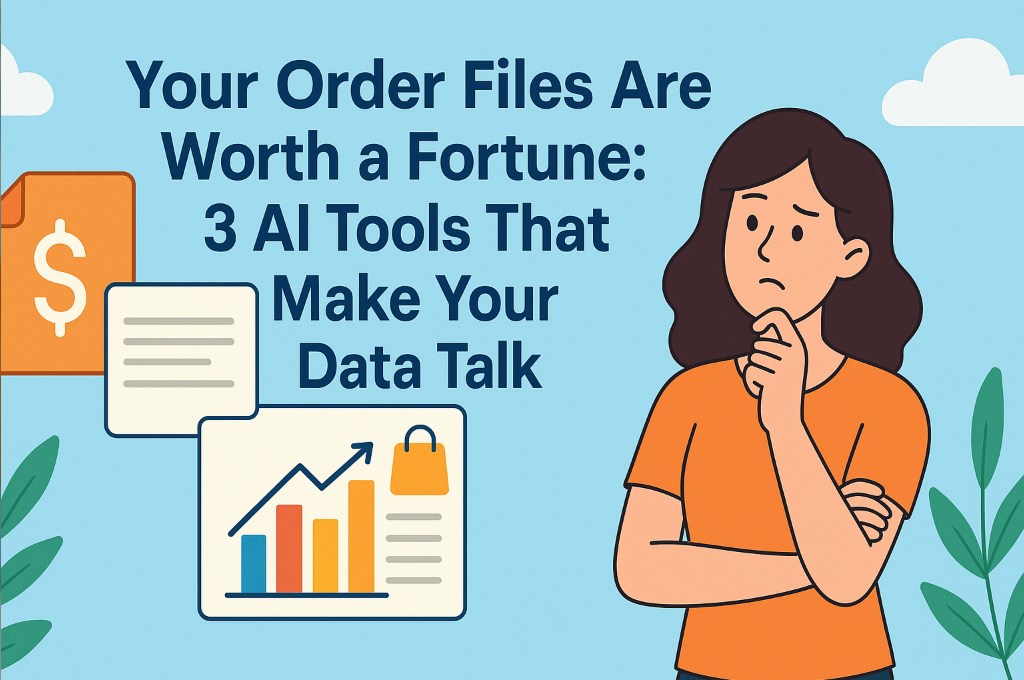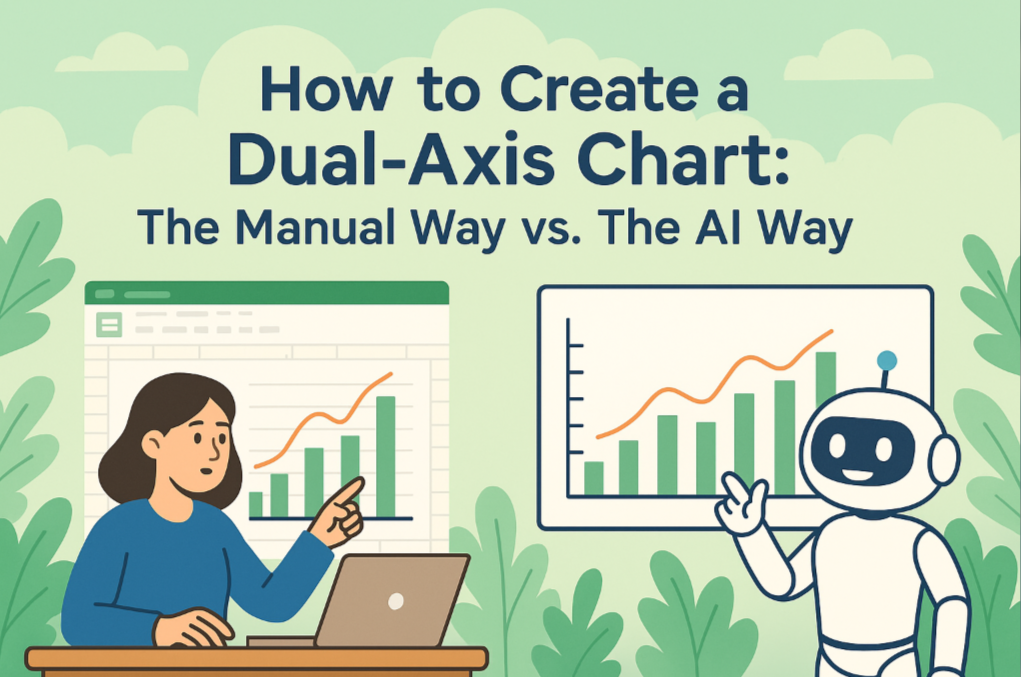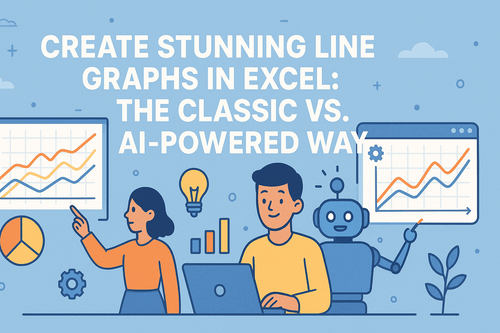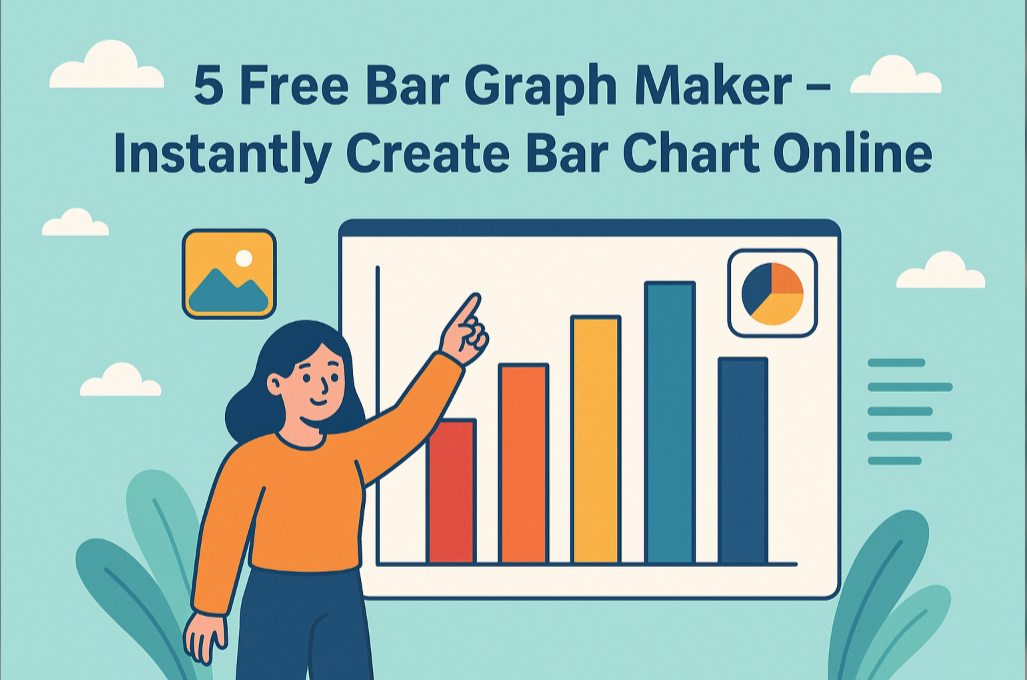Key takeaways:
- AI flowchart tools can automatically convert your onboarding checklists from Word or Excel into clean, visual process diagrams, saving HR from manual design work.
- For a new hire, a simple flowchart for "how to file an expense report" or "how to request time off" is far more intuitive than reading long policy documents, significantly reducing rookie mistakes.
- By automating flowchart creation, managers can reinvest hours of repetitive Q&A time into higher-value work like improving the overall onboarding experience and boosting new hire retention.
"Hi, where do I get office supplies?" "So... what's our company's expense reimbursement process? Who needs to sign off on it?" "I need to request a day off. Where's the HR system, and what's my password?"
Sound familiar? For Human Resources (HR) and department managers, a new hire's first week is often a "Q&A Week" dedicated to answering basic questions. The meticulously prepared, multi-page New Employee Handbook sits untouched on their desk, but when a real question arises, a new employee's first instinct is always to ask someone.
This is the dilemma of traditional onboarding: text-only policies are counter-intuitive. They're like a map packed with information but no clear navigation, leaving new hires lost.
Now, imagine if a new employee's desktop just had a few simple diagrams: one called "Your First Day To-Do List," another called "Expense Reports Made Easy." Each one is as clear as an IKEA assembly manual. This is the magic of AI flowchart generators. They are your "Process Translators," capable of translating dry, boring rules into visual action guides that anyone can understand in seconds.
What is an AI Flowchart Generator?
An AI flowchart generator is an application that uses artificial intelligence (specifically Natural Language Processing) to "read" the text or simple tables you input and automatically convert them into logically structured, professionally formatted flowcharts.
Unlike traditional diagramming tools (like PowerPoint or Visio) that require you to manually drag every shape and draw every line, the core of an AI tool is understanding, not just drawing. You simply tell it the steps and logic of your process, and it acts like a professional process consultant, handling all the visual design work for you.
For example, you no longer need to painstakingly draw out every branch and decision box for "Submit Application -> Manager Approval -> (If amount > $1000) -> Director Approval -> Finance Pays." You just feed this description to an AI tool, and it will automatically identify the steps, conditional logic, and different roles to generate a standard, polished flowchart.
The Benefits of Using AI Flowcharts to Guide New Hires
For time-strapped managers, the return on investment from optimizing the onboarding process is immense. It's not just about efficiency; it's about a new hire's first impression and long-term retention.
- Free Up Productivity for HR and Managers: Liberate HR from being a "human-powered answering machine," allowing them to focus on employee engagement and team culture.
- Improve the New Hire Experience and Retention Rate: Clear, friendly guidance dramatically reduces a new employee's anxiety, making them feel valued and helping them integrate faster, thus lowering early turnover.
- Ensure Process Accuracy: Visual flowcharts reduce errors caused by misinterpreting text, especially for critical processes like reimbursements and IT permissions, saving significant communication and correction costs.
- Easily Standardize and Iterate on Processes: When a company process needs an update, you no longer have to spend ages modifying a complex diagram file. Just change a few lines of text, and the AI will regenerate a perfect flowchart, making knowledge management and updates incredibly simple.
Excelmatic: Your Intelligent Process Planner

You might think that something as magical as AI must be complicated to use. Excelmatic is here to completely eliminate that concern. It packs powerful AI capabilities behind an incredibly simple interface, designed specifically for non-technical but efficiency-driven HR and managers.
You may know Excelmatic as an expert at handling numbers and generating data charts. Now, its powerful AI engine has expanded into the realm of process management. You don't need to learn any complex new tools; you can create professional flowcharts using the methods you're most familiar with—writing text or making a simple table.
How Does Excelmatic Generate Flowcharts in One Click?
Forget about complex dragging and aligning. To create a flowchart in Excelmatic, you only need to provide the core "content" and leave the design work entirely to the AI. The process has zero learning curve and supports two methods you already know well:
Method 1: Generate from Plain Text, Like Writing a Memo
Simply list your process steps in order in any text editor (like Word or Notepad). The AI is smart enough to understand the embedded logic. For example, a standard approval process could be written like this:
- Applicant (Business Role) initiates an approval request (submits form + supporting documents).
- Initial Reviewer (Specialist) checks for material completeness.
- If initial review fails: Reviewer provides feedback and returns to applicant; If initial review passes: Final Reviewer (Supervisor) conducts content compliance check.
- Applicant (Business Role) revises materials based on feedback and resubmits.
- After passing final review, Approver (Manager/Director) makes a decision within their authority.
- If approved: Admin generates a result and archives it; If rejected: Approver provides a reason, and the process terminates.
Copy and paste this text directly into Excelmatic. The AI engine will instantly understand the roles, steps, and "if/else" branching logic, automatically generating a professional, clear, and visual flowchart for you.
Method 2: Generate Directly from an Excel Table
If your management process is already documented in Excel, it's even easier. As long as the table contains key logical fields, Excelmatic can use it directly.
For example, a structured table that perfectly matches the process above:
| Node ID | Node Name | Predecessor (Node ID) | Role/Department | Node Type |
|---|---|---|---|---|
| 1 | Initiate Approval Request | None | Applicant (Business) | Start |
| 2 | Initial Review | 1 | Reviewer (Specialist) | Review |
| 3 | Initial Review Fails: Feedback | 2 | Reviewer (Specialist) | Action |
| 4 | Applicant Revises Materials | 3 | Applicant (Business) | Action |
| 5 | Final Review | 2 | Reviewer (Supervisor) | Review |
| 6 | Approval Decision | 5 | Approver (Manager) | Decision |
| 7 | Approved: Archive Result | 6 | Admin/Archive | End |
| 8 | Rejected: Provide Reason | 6 | Approver (Manager) | End |
Import this table into Excelmatic, and it will use the "Predecessor" column to accurately build all the complex connections and branches—for example, it knows that "Node 2" leads to both "Node 3" and "Node 5" as separate paths. The entire process is fully automated, requiring no manual adjustments.
Frequently Asked Questions (FAQs) about AI Flowchart Tools
1. I have zero drawing skills. Can I really use this? Absolutely! This is the core value of AI flowchart tools. You are responsible for the "content" (the process steps), and the AI handles the "form" (the visual design). It's much simpler than drawing in PowerPoint.
2. Can I edit the flowchart after the AI generates it? Of course. The AI creates a precise first draft for you, saving you 90% of the time. On top of that, you can still fine-tune details (like colors, text, and positions) just like you would in a traditional tool to meet your specific needs.
3. What's the advantage over professional tools like Visio? In short, it's automation vs. manual creation. Visio gives you a "paintbrush" and expects you to be an "artist," requiring you to design the layout and connections yourself. Excelmatic acts as an "architect"; you give it your ideas (text description), and it builds the "blueprint" (flowchart) for you. For managers focused on efficiency, AI is the superior choice.
4. Our onboarding process involves sensitive information. Is it secure to upload? Excelmatic uses enterprise-grade security standards, employing strict encryption and data isolation for all user data to ensure your processes and information remain secure. We understand the critical importance of corporate data confidentiality.
End Onboarding Confusion and Create the Perfect First Day with Excelmatic
A new employee's onboarding experience shapes their first impression of the company and profoundly impacts their future productivity and desire to stay. A clear, friendly, and professional onboarding process is the best welcome gift you can give a new team member.
Excelmatic transforms the complex, time-consuming task of creating flowcharts into a simple "copy and paste" action. Now you can easily create visual guides for every key process in your company, empowering your new hires and freeing up your team.
Key Advantages:
- Saves massive amounts of time for HR and managers by eliminating repetitive questions.
- Gives new employees clear action guides, reducing anxiety and mistakes.
- Standardizes and professionalizes company processes, enhancing management efficiency and your employer brand.
- Supports both text and Excel inputs, allowing you to work in the environment you know best.
Try Excelmatic for free today and prepare a visual onboarding map that your next new hire will rave about. For enterprises requiring custom templates or private deployment, please contact our solution experts, and we will build a dedicated process management engine for you.
